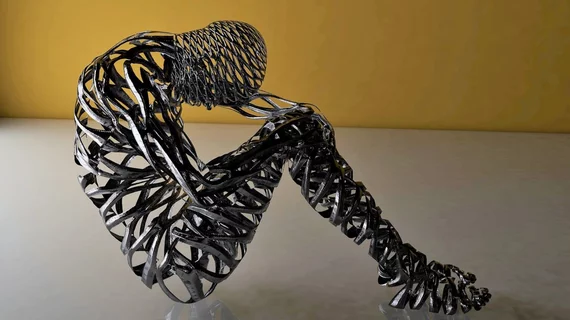Approximately one in four stroke survivors are affected by disabling anxiety, but there are currently no specific guidelines in place to help these individuals. Noting that face-to-face cognitive behavioral therapy (CBT) may be difficult for some stroke survivors, a team of researchers developed and implemented a self-help CBT intervention rooted in telemedicine, sharing its findings in Stroke.
“Remotely delivered CBT by internet, email, telephone, mobile text messaging, or video calling (telemedicine) makes it possible to centralize resources for staff, training, quality monitoring, and cross coverage of large geographic areas, reducing cost and improving access,” wrote lead author Ho-Yan Yvonne Chun, PhD, University of Edinburgh in the U.K., and colleagues. “Meta-analyses have demonstrated guided internet-based CBT is superior to waitlist control and as efficacious as face-to-face CBT in treating anxiety disorders or depression in adults without stroke.”
Chun et al. recruited 27 stroke patients for their study, randomly assigning 14 of them to CBT for anxiety after stroke (TASK-CBT) and the other 13 to relaxation therapy (TASK-Relax). The TASK-CBT intervention was delivered via the telephone, website, email or text, lasting a total of six weekly sessions. A stroke physician trained in CBT led each session with supervision from a neuropsychiatrist. For the TASK-Relax intervention, participants took part in a single “introductory session” over the telephone and then worked on guided breathing exercises, audio-guided progressive muscle relaxation and other online relaxation treatments.
Overall, all 14 patients completed their TASK-CBT sessions. Patients from the TASK-CBT group reported lower levels of anxiety than patients from the TASK-Relax group after six weeks and 20 weeks. The researchers also asked for detailed feedback to track how patients felt about going through the TASK-CBT intervention.
“Most users reported finding the online videos and written information useful,” the authors wrote. “Most participants reported the TASK-CBT treatment was helpful in overcoming their anxiety. No unwanted effects were reported. One participant felt slightly isolated.”
The team also wanted to explore the feasibility of asking stroke survivors to use wrist-worn actigraphy sensors, noting that all 27 participants agreed to wear the sensor and 93% of patients captured “usable recording” that covered at least 14 days.
“A wrist-worn sensor is a convenient way to measure actigraphy data from which we can infer potentially clinically useful characteristics regarding a person’s activity and sleep patterns,” the authors wrote. “These data could be clinically relevant in assessing anxiety after stroke. Passive collection of objective outcome measures throughout an entire randomized controlled trial requires minimal participant effort, which in turn could minimize bias by reducing attrition, reliability, and interrater variability problems related to patient-reported outcome measures or observer-rated measures.”
Ultimately, Chun and colleagues concluded that telemedicine-driven CBT is a feasible treatment option for stroke survivors. More research is needed, they added, due to the study’s small sample size and other limitations.
The full study is available here.

